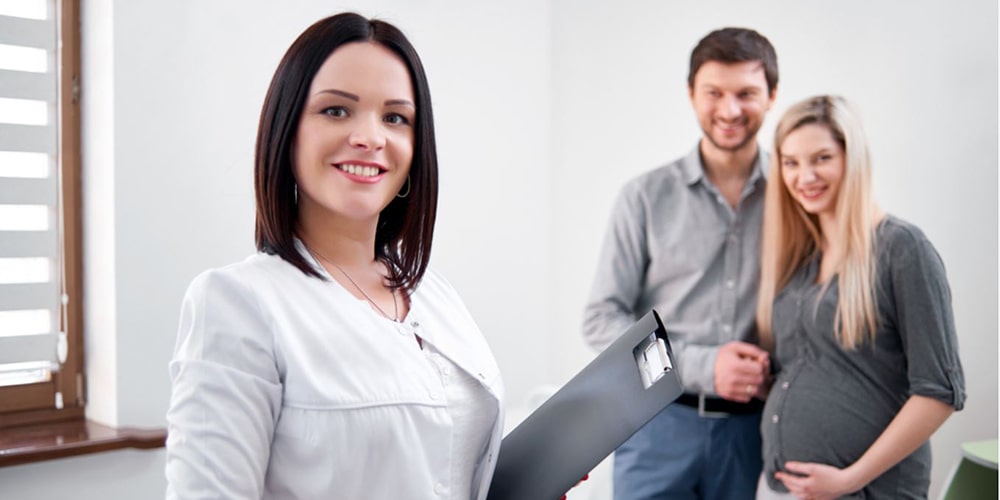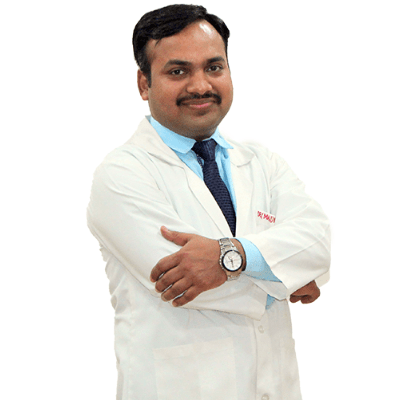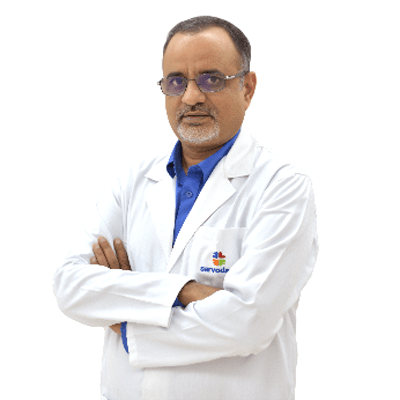
IVF is the most commonly used fertility treatment for couples struggling with conception. The most common reasons for IVF are ovulation issues and male factor infertility. It is the most effective form of assisted reproductive technology, that accounts for 99% of all assisted reproductive technology (ART). IVF is a procedure designed to help a woman get pregnant. When you have problems with egg quality, ovulation, endometriosis, or blocked fallopian tubes, IVF can help. Also, IVF is used when the man has low sperm count or sperm motility issues.
IVF is the abbreviation of in vitro fertilization. In vitro fertilization is a process of fertilization where an egg is combined with sperm outside the body, in vitro. During IVF, mature eggs are collected from the ovaries and fertilized by sperm in a lab. Then the fertilized egg (embryo) or eggs (embryos) are transferred to the recipient’s uterus. The procedure can be done using your own eggs and your partner’s sperm. Or, IVF can involve eggs, sperm, or embryos from a donor.
From the beginning of the process to the end, IVF takes around 4-7 weeks to complete. This timeframe is considered as one cycle. First, you wait for your eggs to mature, and the doctor retrieves the eggs to fertilized them with your partner or donor’s sperm. You will return in 3-5 days to have the embryos inserted into the uterus.
Your chances of having a healthy baby using IVF depends on many factors, such as your age and the cause of infertility. Your doctor can help you understand how IVF works, the potential risks and whether this method of treating infertility is right for you.
Treatment Options Available
- Complete Assessment of male and female subfertility
- Ovulatory induction / controlled ovarian stimulation
- Intrauterine Insemination (IUI) – Husband / Donor
- In Vitro Fertilization (IVF)
- Intra Cytoplasmic Sperm Injection (ICSI)
- Semen Bank
- Donor Oocyte Program
- Donor Embryo Program
- Sperm retrieval techniques
- TESA – Testicular Sperm Aspiration
- TESE – Testicular Sperm Extraction
- MESA – Micro Surgical Epididymal Sperm Aspiratio
- PESA – Percutaneous Epididymal Sperm Aspiration
- Cryopreservation Services (for Gametes and Embryos) (Fertility Preservation)
- Blastocyst Culture
- Assisted Hatching
Assisted Reproductive Technologies (ART)
Any medical technique that attempts to obtain a pregnancy by means other than by intercourse is defined as ART. These techniques involve the manipulation of sperm or Oocyte or both, and the gametes or the embryos are transferred into the uterus or fallopian tubes. ART includes Intrauterine Insemination (IUI), In Vitro Fertilization-Embryo Transfer (IVF-ET), Intra-Cytoplasmic Sperm Injection (ICSI). Assisted Hatching (AH) etc. We at ARRU provide you the full ranges of ART services to aid your infertility treatment and help you to bear a child. Successful outcome with minimum invasion is always our priority.
Intra Uterine Insemination (IUI)
This is the method by which processed semen is placed directly in the uterus with the help of a catheter. IUI can be done in a natural cycle, however, to get better results, it is usually preceded by ovulation induction / ovarian stimulation using appropriate fertility enhancing drugs. With a policy of initial treatment by 1UL approximately 20 % couples (cumulative pregnancy chances) would achieve pregnancy. However, there is not much benefit by continuing same treatment repeatedly and after 3-4 unsuccessful cycles of IUI; couple should consider IVF or ICSI treatment. Advanced female age, poor post wash semen quality and a history of tubal factor or previous pelvic surgery are significant risk factors for poor IUI success rates. In Vitro fertilization (IVF) and Embryo Transfer (ET)Commonly known as “Test Tube Baby”. IVF means fertilization of an ovum outside the body and consequently transfer of the fertilized ovum (embryo) into the uterus of the woman. IVF is probably the most widely practiced ART procedure in the world. The procedure does not need overnight admission at any step and the complete treatment is conducted on outpatient basis.
Steps Involved In IVF Procedure:
- Ovarian stimulation by hormonal injections to produce multiple eggs (some patients require ‘down regulation’ of their natural hormones by medicines starting on Day 21 of their previous cycle, before starting their ovarian stimulation)
- Monitoring of the response by ultrasound scans and blood tests.
- Egg retrieval with the help of a needle under local /general anesthesia.
- Collection and adequate preparation of sperm from male partner on same day.
- Fertilization of the eggs in the laboratory.
- Transfer of the resulting embryo(s) into the uterus of the woman.
- Hormonal treatment to support Embryo Implantation over next two weeks.
- Blood test is performed 15 days after ET to access the establishment of pregnancy.
If the treatment procedure is successful, one or more embryos will implant in the uterus and the pregnancy will result, just as it happens in the natural process of conception. Indications for IVF: IVF is helpful in a variety of infertility cases involving: –
- Bilateral tubal blockage or abnormality
- Male factor infertility
- Unexplained infertility
- Where ovulation induction/stimulation (OI / OS) & IUI has failed
- Endometriosis
Ejaculatory Disorders
- CBAV – congenital bilateral absence of the vas deferens
- Obstruction of both ejaculatory ducts.
- Failed vasectomy reversal.
- The steps involved in ICSI procedure are exactly the same as for IVF, except that fertilization is achieved with the help of a micromanipulator.
- In many cases when there is a complete absence of sperm in the ejaculate (Azoospermia), normal sperm can be retrieved from the testis / epididymidesand used for ICSI.
The Testicular / Epididymal Sperm Retrieval Techniques Are:
- PESA – Percutaneous Epididymal Sperm Aspiration
- MESA – Microsurgical Epididymal Sperm Aspiration
- TESA – Testicular Sperm Aspiration
- TESE – Testicular Sperm Extraction
Cryo Preservation Of Embryos (Embryo Freezing):
Excess (Surplus) embryos can be Cryo-preserved at ultra low temperatures for many years. These frozen embryos can be used subsequently without the need for ovarian stimulation and egg retrieval. However the pregnancy rate following transfer of frozen embryos is lower than that with fresh embryos.
Assisted Hatching (AH):
The procedure is based on the fact that an alteration in zona pellucida (outer covering of egg) either by drilling a hole through it or by thinning it, will promote hatching or implantation of embryos that are otherwise unable to escape intact from the zona pellucida.
IVF Using Donor Oocyte (Eggs):
Women who are unable to produce their own eggs or their eggs failed to fertilize during an IVF cycle due to poor Oocyte quality can be helped by using other women’s egg (Donor Oocyte). Replacement of donor embryos and surrogacy are other available options to the infertile couple.
Semen /Sperm Freezing:
Semen /Sperm can be stored frozen at ultra-low temperatures for long duration which could be helpful in a variety of circumstances such as:
- Semen freezing prior to chemotherapy.
- Inability of the male partner to be present or to deliver the semen on the day of procedure (however, the frozen semen is used as a standby and fresh sample is always preferable)
- Testicular biopsy / sperm freezing to avoid repeated biopsies.
- Donor semen, until getting a repeated investigation done for the infectious diseases
Semen Bank:
We are having a semen bank. The bank contains frozen sperm from voluntary donors with various backgrounds and physical characteristics to match with the individual needs. Donors arc screened thoroughly to rule out transmission of any infectious or genetic diseases.
Investigations Required For Subfertility Evaluation Or An ART Procedure:
For successful conduction of the ART procedure(s) the couple has to undergo certain investigations:
Investigations For Female Partner:
General Health Check Tests
- Tubal patency tests: This test detects blockages or pelvic adhesions in your fallopian tubes. It includes procedures like gas insufflation, hysterosalpingography (HSG), laparoscopy, etc.
- Pelvic ultrasound: It checks the status of your uterus, fallopian tubes, endometrium and ovaries to identify fibroid tumors, endometriosis, pelvic infections, ovarian cysts, hydrosalpinx etc.
- Follicular monitoring: This involves a series of ultrasonic monitoring of the ovarian follicles to identify when the egg is mature.
- Ovulation testing and Hormonal Assay: These tests measure your hormone levels to determine whether you are ovulating or not.The testsmeasure the levels of Estradiol, Follicular Stimulating Hormone (FSH), Luteinizing Hormone (LH), Progesterone, Prolactin and Thyroid Stimulating Hormone and thyroxin (T3/T4) hormones.
- Hysteroscopy and laparoscopy:These procedures provide exact condition of your pelvic organs and are helpful in diagnosing abnormal uterine conditions such as fibroids, scar tissue, polyps and congenital malformations.
Investigations For Male Partner:
- General physical examination
- Semen analysis
- Semen culture &sensitivity
- Transrectal and scrotal ultrasound
Investigations For Both The Partners
- HIV
- Hepatitis B
- VDRL
- Blood grouping
- Hepatitis C
Make an appointment
Our Doctors
-
Dr. Sujoy Kr. Bhattacharjee
Joint Replacement -
Dr. (Maj.) Mukesh Garg
Orthopaedics & Arthroscopy -
Dr. Kamal Verma
Neuro Sciences


